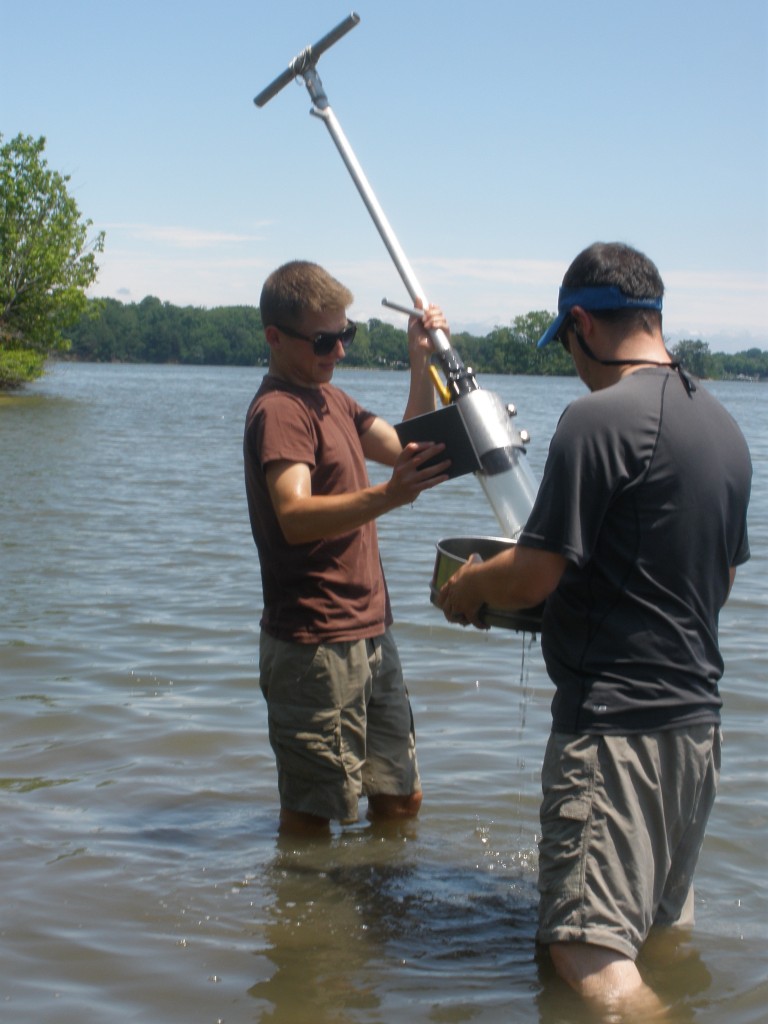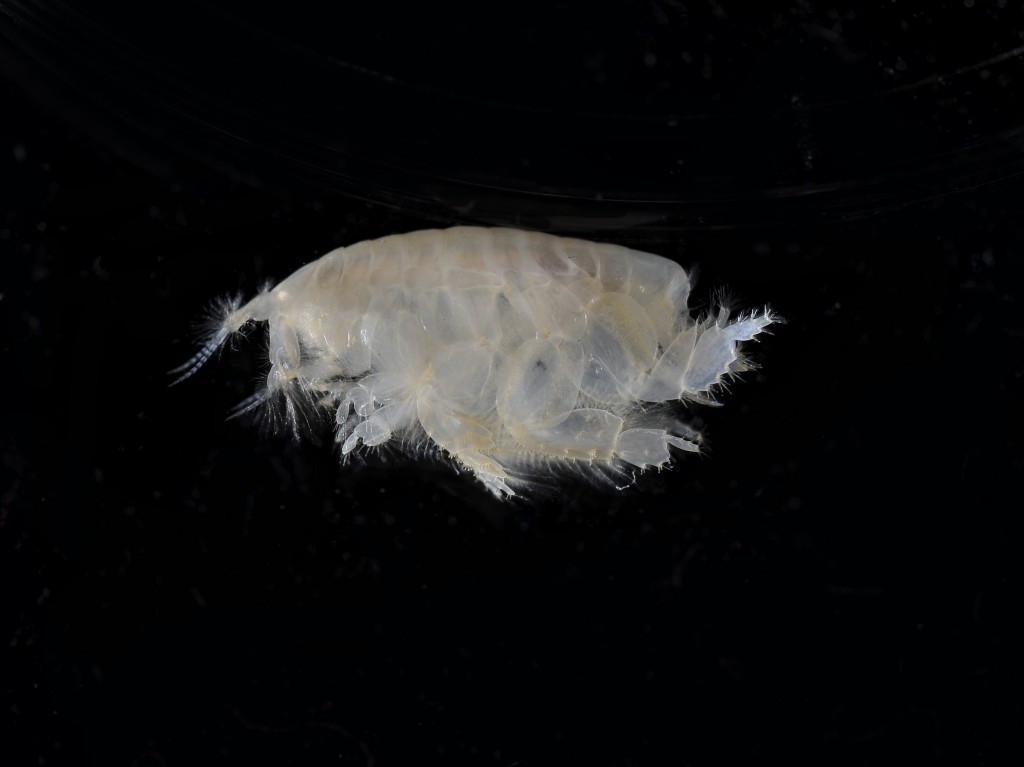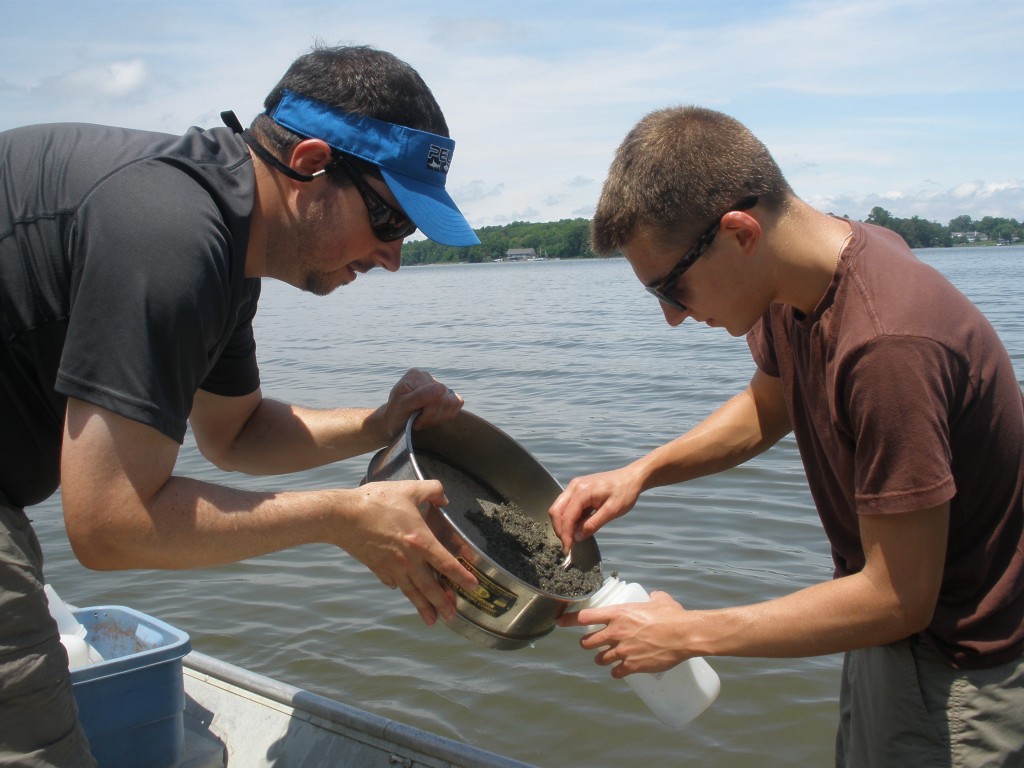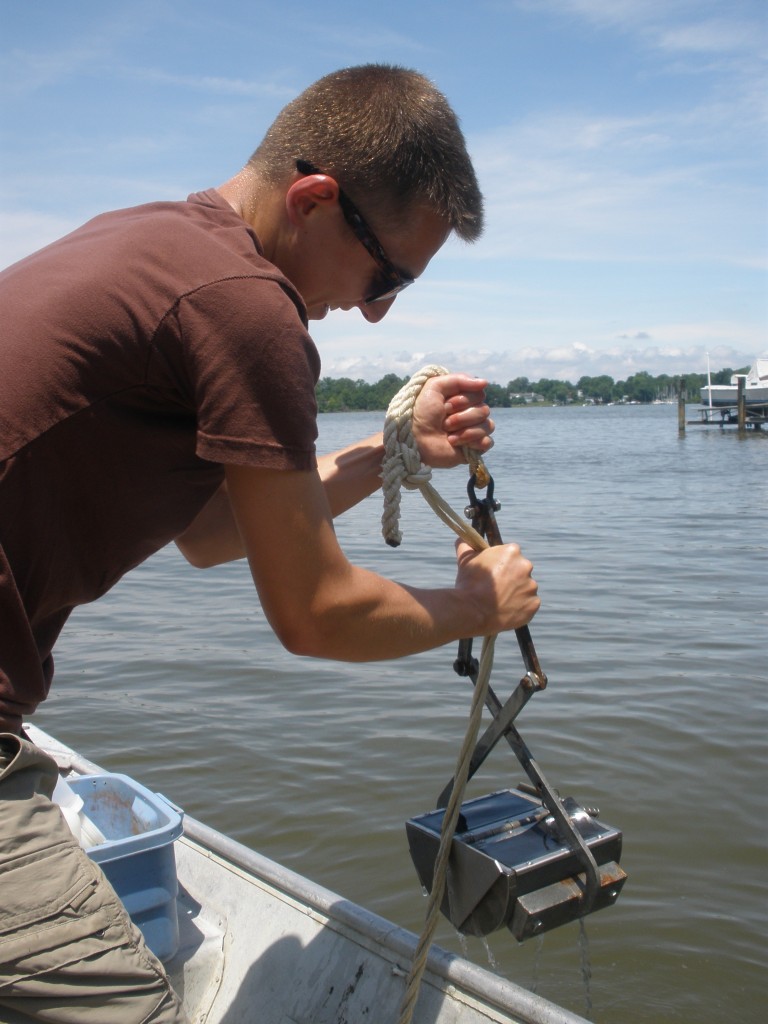By Sarah Hansen
Most of us think of the Chesapeake Bay as a single entity – one big body of water. But Smithsonian Environmental Research Center (SERC) ecologist Dean Janiak and his intern, Ben Rubinoff, have a more nuanced perspective. They’ve collected more than 150 samples from eight different habitats within the Bay and along its shoreline that contain mud, sand and lots of tiny animals.
Their ultimate goal: Discover how differences in habitats in the Rhode River (a sub-estuary of the Chesapeake Bay) can change biodiversity among creatures at the bottom of the river, and how those patterns change over time. If it turns out that some habitats host more diverse animal communities than others, land managers can focus conservation efforts on those areas.
The project is one of the first attempts to collect data using a new, systematic collection method for the MarineGEO initiative, a global Smithsonian program to learn about marine ecosystems.
The pair used data from the National Oceanic and Atmospheric Administration (NOAA) to map the different habitats before sampling. That way, they can be sure not to miss rare habitats. For example, muddy habitat dominates the center of the Rhode River, but there are also sandy and oyster reef spots. Along the shore there are riprap (rocky), marsh, beach, forest, and bulkhead (paneled wall) habitats. In addition, Rubinoff used a method invented by a Belgian mathematician—originally used for determining votes in politics—to determine exactly how many sites from each habitat type they should sample to obtain an accurately proportioned data set.
Once the math is done, they head to the field. Either from inside a jon boat or up to their knees in murky water along the shore, they use a tool called a “petite ponar” to snatch sediment from the bottom surface. “It’s like big salad tongs,” said Rubinoff.
They pour the sample through a sieve about the size of a snare drum with .5-millimeter holes. It removes the water and the finest sand and mud from the sample, leaving behind animals like clams, worms, tiny crustaceans called amphipods and (rarely) oysters. Then Janiak or Rubinoff pours and spoons the critters into a plastic jar and adds a special chemical solution. The solution preserves the animal tissue and also dyes it pink.

When the bottom is too hard for the ponar, Rubinoff and Janiak use a “pole corer” to collect samples.
“When we come back, Ben gets to count everything,” said Janiak. The dye makes it just a little easier to tell a tiny worm from a tiny stick. Rubinoff said he will identify each individual “all the way down to the species level.”
As they collect each sample, Martha “Midge” Kramer, SERC invertebrate ecologist and expert boat driver, records information about the sample’s location – things like salinity, temperature and depth that might impact what animals are present. They have to finish the sampling quickly, because as summer progresses, oxygen levels drop in the Bay and animals are sparser. “The pressure is on to get it all done,” said Rubinoff. Once they finish collecting, the team will analyze the results to see if certain factors, like habitat type or distance from the mouth of the river, affect the presence of certain species.
Janiak and Rubinoff hope this large study will provide data others can use to answer a variety of ecological questions. Ideally, scientists will repeat the sampling in years to come to monitor biodiversity, habitat size and habitat location, which will almost certainly feel the influence of climate change and urbanization. The data can also help with fishery management, clean water regulations, and other responses to the impacts of climate change.

Tiny crustaceans called amphipods are common in the Rhode River. This one is about .5 centimeters long. (photo courtesy Dean Janiak)
Besides supporting conservation efforts, Janiak has a side project in mind. “One of my goals is to make a pictorial key to all the species in the Rhode River,” he said. Janiak is also a photographer, and his booklet would contain pictures and basic information about all the species. It would help save time for other labs and organizations working in the area.
“Was the big one Neanthes?” Rubinoff asked as he scraped a sample with a squirming worm into a jar. “I’m slowly trying to learn those.” Janiak confirmed that it was. Maybe one of his guides will find its way back to Rubinoff when he returns to The Ohio State University as an internship souvenir.



